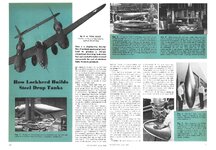drgondog
Major
Left main because carb overflow return line supplies return to L. Main. After Group formation, switch to 85gal tank and depending on mission - burn 2-40gal depending on tank fill amt, then alternate externals until near dry (no gauges) - then alternate Mains. At some point near end of mission drain fuse tank to 20gal.Bill,
I know you've posted something like this before but blame closed head injuries and alcohol.
For a typical long range penetration with P-51 using say two 75gal drop tanks, what's the order of tanks that you'd use from start up to mission end? I seem to recall you start with the left wing tank or am I mistaken?
Blame my obsession with minutia for this.
Thanks



